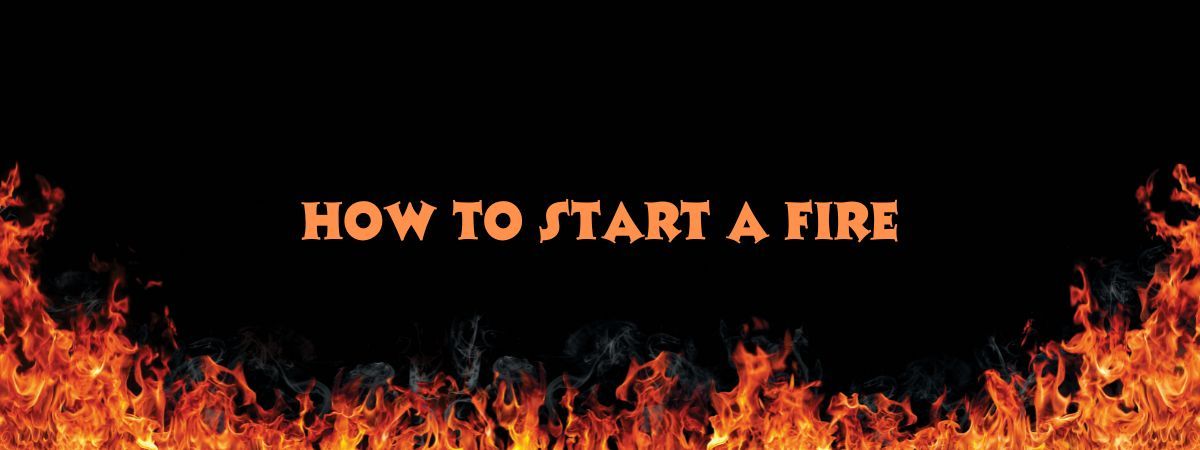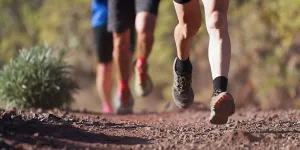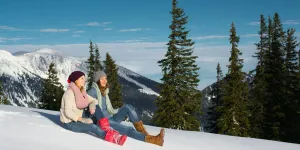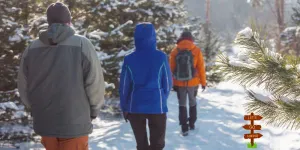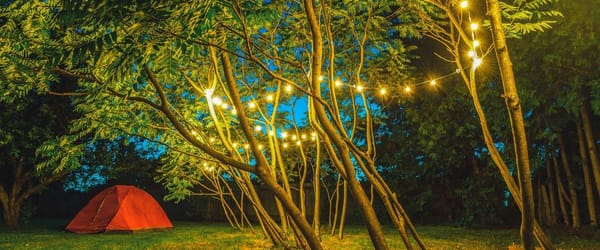How to start a fire - fire has played a pivotal role in human civilization since time immemorial. It's an age-old skill, part of human history - the ability to start and maintain a fire. From providing warmth and light to cooking food and warding off predators, fire has been an essential tool throughout history.
If you're an outdoor enthusiast or even a novice camper, knowing how to build and start a fire is essential knowledge. Whether you're trying to survive in the wilderness or just looking for outdoor activity on a camping trip, having this fundamental skill can make all the difference in staying safe and being comfortable.
Fires are essential for outdoor survival, especially in the wilderness. It is a game changer should you come face to face in an emergency. Fire-making skills are a must if you intend to venture into the wild and embrace mother nature.
Not only does it keep you warm on chilly nights outside, but it also provides that much-needed comfort in the form of light and hot food. Making fires may seem daunting at first, but with the right technique and a good set of instructions, just about anyone can learn to build a roaring fire.
Knowing how to construct a spark from simple materials is a low-cost way to provide warmth, symbolic ceremonial power, or even delicious cooked food, and clean purified water for drinking.
It is funny that everything tastes better and more tantalizing outside, especially in a log cabin, whether they are cooked over a raging fire, thrown onto a steel pan, or simply in a pot over a smothering fire. Imagine sausages and eggs sizzling and that smell of cooked food lingering in the air. But that is a topic for another day. Look out for it!
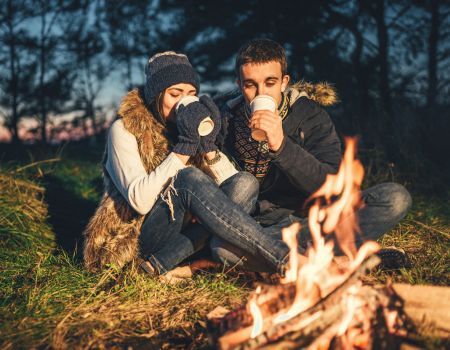
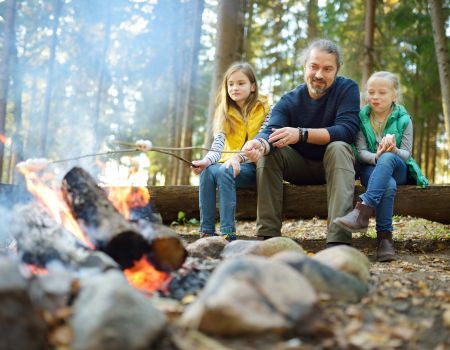
Sitting By A Camp Fire is comforting and stress relieving.
In this blog post, we’ll cover everything you need to know about starting and nurturing your campfire. We will cover the different ways of starting a fire, understand the different types of tools and materials available, and we will go into a little more depth on how to start a fire in a fire pit.
A word of caution here
Besides learning how to start a fire, you must learn how to extinguish the fire. Yes, you must learn how to put the fire out when you are finished. That is not just merely a moral obligation on your part but also an imperative duty of humanity to extinguish the fire!
Imagine the catastrophic devastation inflicted upon the land and verdant foliage and the relentless agony and annihilation endured by the precious wildlife inhabiting those sacred woods. It must be our unwavering responsibility! Key takeaway - Wood Burn!
And remember, you may not have the luxury of having a fire extinguisher on hand.
Different Ways of Starting A Fire
Starting a fire can be accomplished through various means, each with its distinct characteristics and requirements. Here are descriptions of different methods for igniting a fire.
Before delving into the different fire-starting methods, it is crucial to understand the basic components of a fire. A fire requires three key elements: fuel, oxygen, and heat. Fuel can be any combustible material, such as wood, paper, or dry leaves. Oxygen is abundant in the air, and heat catalyzes to initiate combustion.
Traditional Fire-Making Techniques
Friction-Based Fire-Making
Friction-based methods rely on the principle of creating heat by rubbing or rotating objects together.
- Fire Plow: This method involves using a long, sturdy stick (plow) and a fireboard. Place the fireboard on the ground and hold it steady. Using the plow, rub it back and forth along the groove on the fireboard. The friction generates heat, creating an ember that can be transferred to your tinder bundle and start a fire burning.
- Bow Drill: The bow drill method utilizes a bow, a spindle, a fireboard, and a socket. The spindle is held in place on the fireboard, and the bow is used to rotate it rapidly. The downward pressure and friction between the spindle and the fireboard generate heat, eventually forming an ember.
- Hand Drill: With the hand drill technique, you'll need a wooden spindle and a fireboard. Hold the fireboard firmly on the ground and place the spindle on top. Apply downward pressure while rotating the spindle between your palms. The friction and heat generated create an ember.
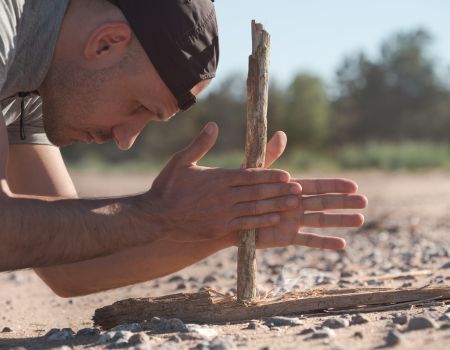
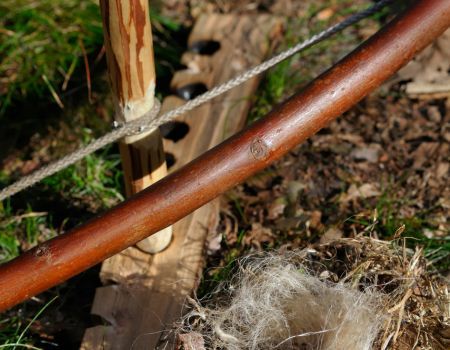
Traditional Ways of Starting A Fire - Hand Rill & Bow Drill
Flint and Steel
Flint and steel is an ancient method that involves striking a hard, sharp-edged rock (flint) against a high-carbon steel, such as a knife or a striker. The impact of the strike produces sparks that can ignite a tinder bundle. Aim the sparks onto your tinder, which can be a small bundle of dry, fine materials like shredded bark or charred cloth, and gently blow on it to encourage combustion.
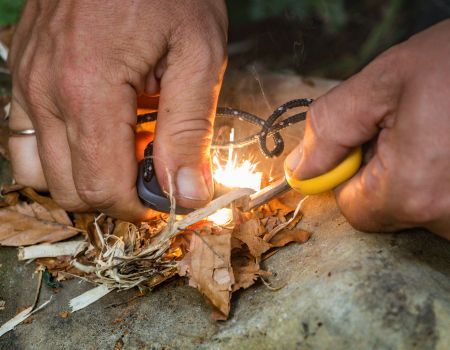
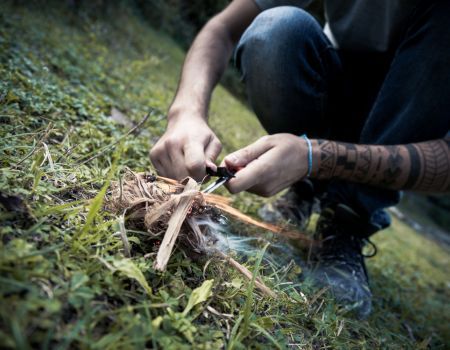
Starting A Fire using Flint & Steel
Modern Fire-Starting Tools
Lighters and Matches:
Lighters and matches are widely used for fire-starting due to their convenience and reliability.
- Disposable Lighters: These commonly available devices contain a fuel source, such as butane, and an ignition mechanism. By pressing the ignition button, a spark is produced that ignites the fuel, creating a flame.
- Waterproof Matches: These matches have a waterproof coating that protects them from moisture. They can be struck against a rough surface, such as the striking pad on the matchbox or a specialized striking surface, to create a flame.
Ferrocerium Rod (Fire-steel):
A ferrocerium rod, commonly known as fire steel or a ferro rod, is a popular tool for starting fires in outdoor settings. It consists of a rod made of ferrocerium, which is a synthetic material. By striking a metal striker, such as a knife or a dedicated fire steel striker, against the rod's rough surface, it generates a shower of sparks that can ignite your tinder or steel wool.
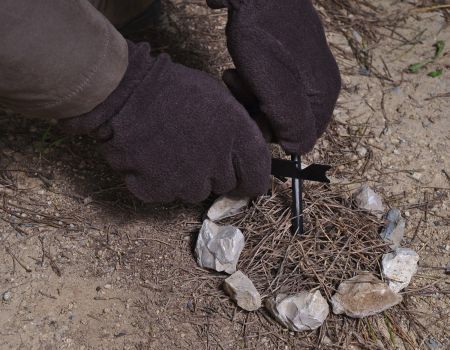
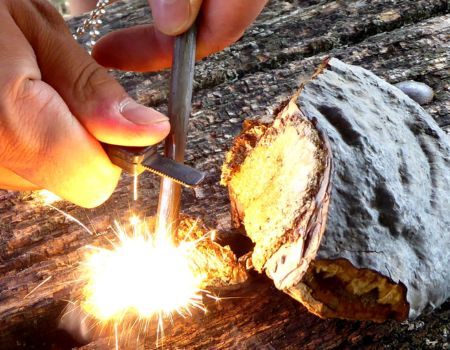
Usingg Ferrocerium Rod to start a fire
Fire Starters:
Fire starters are convenient tools designed to facilitate fire ignition.
- Fire Cubes or Blocks: These compact blocks are usually made from a combination of wax, sawdust, and other flammable materials. They can be easily ignited with a lighter or a match, providing a sustained flame to ignite your larger fuel.
- Fire Paste or Gel: These viscous substances are applied to your desired fuel, such as wood or charcoal. They burn for an extended period, aiding in fire ignition. Fire paste or gel often contains flammable compounds like alcohol or petroleum-based ingredients.
Chemical Fire Starting
Potassium Permanganate and Glycerin: This method involves combining a small amount of potassium permanganate with glycerin. Potassium permanganate is a powerful oxidizer, and when mixed with glycerin, it triggers a chemical reaction that generates enough heat and ignites tinder. The mixture should be handled with caution, as it can be reactive.
Fire Piston: A fire piston is a small cylindrical device with an airtight piston. By rapidly compressing the air inside the cylinder, the temperature rises dramatically, igniting a small piece of char cloth or similar tinder material within the piston.
Others
Magnifying Glass: Using a magnifying glass as a fire-starting tool offers a simple yet effective method to ignite a fire. By harnessing the power of the sun's rays, a magnifying glass can concentrate sunlight into a small focal point, generating intense heat. When this focused beam of light is directed onto a tinder material such as dry grass or leaves, pine needles, paper, or tinder bundles, it can ignite them, initiating a fire.
Using a magnifying glass for fire starting is a safe and environmentally friendly option. It eliminates the need for potentially hazardous materials like lighter fluid or matches.
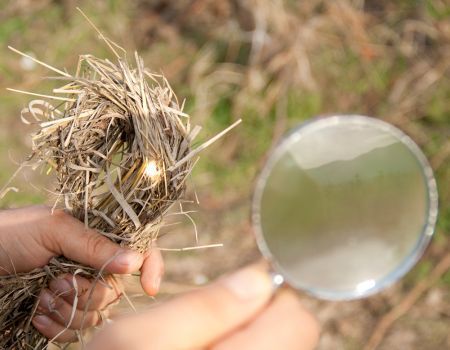
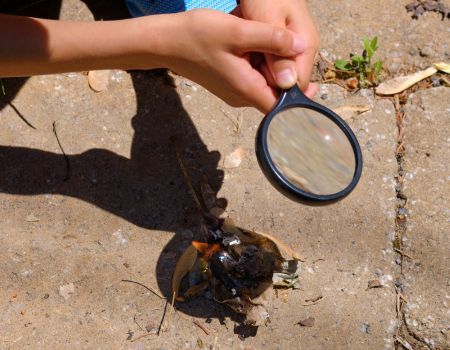
Using a Magnifying Glass to start a fire on a sunny day
Steel Wool Method: Steel wool are a bundle of very fine, flexible steel filaments that is highly flammable and is an effective fire-starting material.
When a spark or an electric current from a 9-volt battery is introduced to steel wool, it ignites quickly, producing a high temperature that can be used to ignite tinder or kindling.
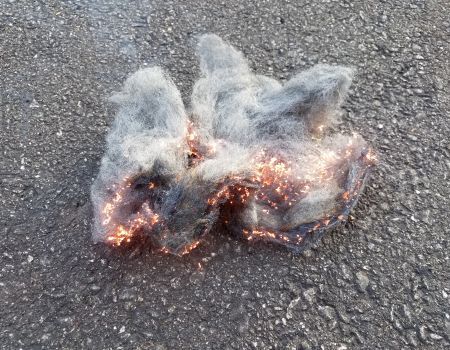
Steel Wool Ignites Quickly
Tools To Start A Fire
Now that we have covered the different ways of starting a fire, let's explore what are the tools and supplies available today.
Fire-starting tools can now be conveniently found in the majority of stores that offer outdoor recreational gear, as well as in specialized survival stores. Additionally, they are readily accessible on popular platforms like Amazon.
You can go directly to the review blog where we have carefully curated several products for starting a fire, from the traditional fire-starting tools to all the different methods and supplies mentioned in this blog. These products reviewed are based on the method reviewed above. You gonna love them.
Just head over there .. Best Fire Starter
How to start a fire in a fire pit
A fire pit is a popular backyard addition that serves as a focal point for outdoor gatherings, providing warmth and ambiance for those chilly evenings spent with friends and family. It can also be at the camping ground or in the wilderness by the stream or other suitable location for starting a fire.
Fire pits come in various shapes and sizes, from simple to elaborate, and can be built using a range of materials. We'll walk you through the steps to create your own sturdy and safe fire pit, perfect for cozying up around or roasting marshmallows on a starry night.
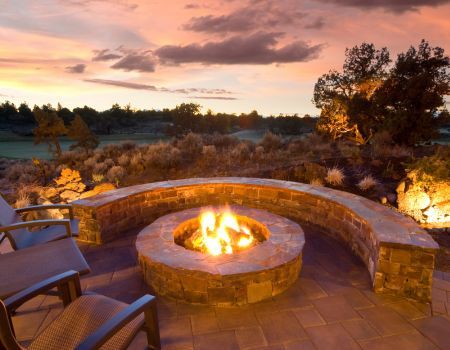
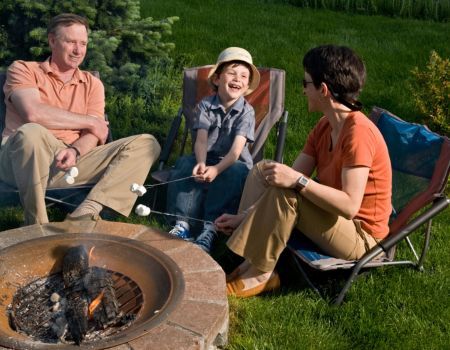
Sitting around a fire pit is a great way to enjoy the evening with loved ones & friends
Materials Needed For The Pit
- Bricks or stones (fire-resistant, such as concrete)
- Sand, Gravel
- Decorative rocks & landscaping fabric
Select a flat, level area in your backyard that's at least 10 feet away from any structures, trees, or flammable materials for your fire site.
The standard size is 3-4 feet in diameter. Excavate the marked area to a depth of approximately 6 inches. Make sure it is level.
Fill the excavated area with a 2-inch layer of gravel and compact it.
Starting at the edge of the gravel base, lay your fire-resistant bricks or stones in a circle, ensuring that they fit tightly together.
Pour a layer of sand on top of the gravel, filling the gaps between the bricks or stones. This will help lock them in place and provide stability.
Continue stacking bricks or stones on top of the first row, staggering the joints for added strength. Build the walls to a height of 12-18 inches. Add a fire ring to protect the brick, if desired.
Add a 2-inch layer of sand to the bottom of your fire pit. This will create a heat-resistant surface for your fires and further stabilize the structure.
If desired, you can place decorative rocks around the outer edge of your fire pit to enhance its appearance.
Start the fire
Now that you have your fire pit ready. You can collect the necessary materials for your fire.
Tinder: Gather small, dry, and easily ignitable materials, such as dry leaves, small twigs, or commercially available fire starters.
Kindling: Collect larger twigs, birch bark, or small sticks that will catch fire easily and sustain the initial flame.
Fuel: Gather enough firewood or larger logs to maintain the fire once it is established.
Place two larger logs or firewood pieces parallel to each other in the fire pit, leaving a small gap between them. This creates a stable base for the fire.
Create a small Tinder bundle using your dry Tinder material. Place it gently in the gap between the two base logs. The tinder bundle should be loose enough to allow airflow.
Position your kindling material, such as small twigs and sticks, over the tinder bundle in a crisscross pattern, creating a small pyramid shape. Ensure the kindling is close enough to catch fire from the tinder.
Using your preferred fire-starting method, ignite the tinder bundle. You can use a lighter, matches, a ferrocerium rod, or any other appropriate fire-starting tool. Aim for the tinder and allow the flame to spread to the kindling.
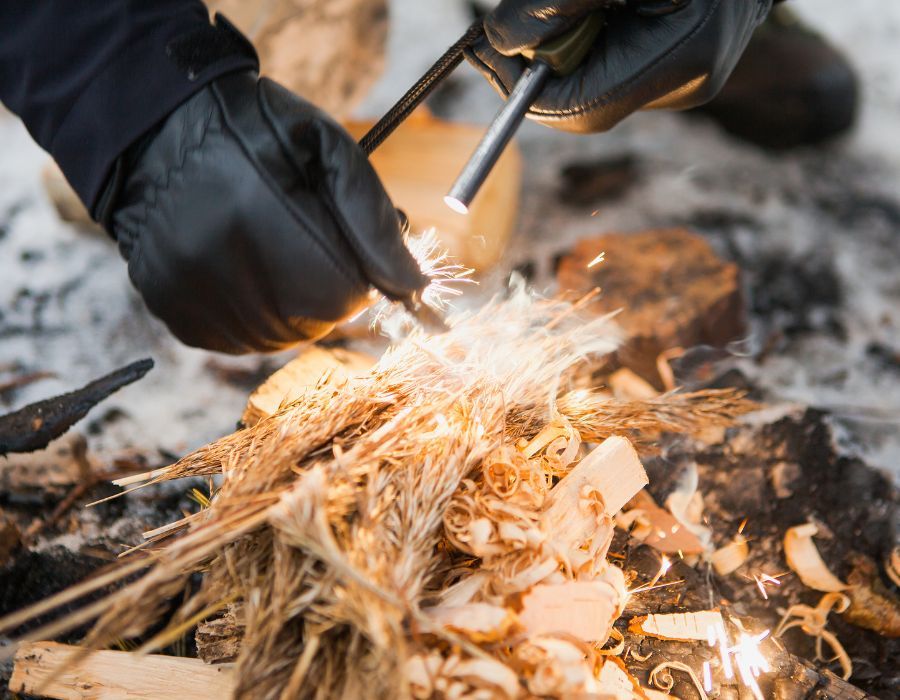
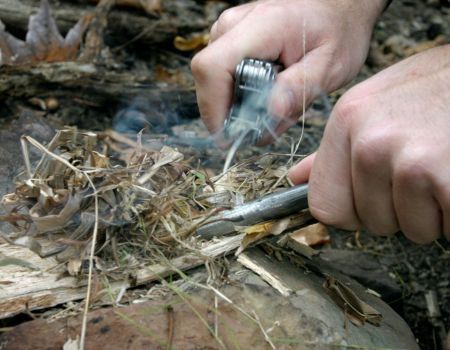
Starting your fire in your Fire Pit
Once the flames are established, carefully add more kindling, gradually increasing the size of the fuel.
As the fire grows, continue adding larger logs or pieces of firewood to sustain it. Place the logs or firewood perpendicular to the initial base logs, allowing for good airflow. Maintain a balanced fire by adding fuel gradually and adjusting the logs as needed.
Always keep a close eye on the fire and never leave it unattended. When you're ready to extinguish the fire, carefully douse it with water or use a fire extinguisher. Stir the ashes and soak them thoroughly, ensuring there all the embers are fully extinguished.
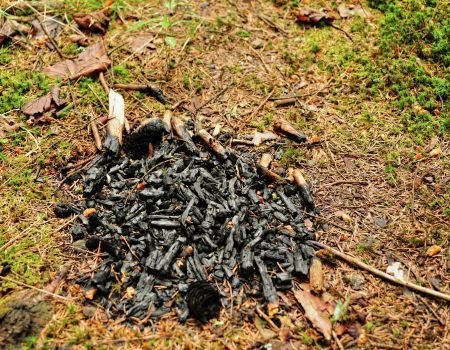
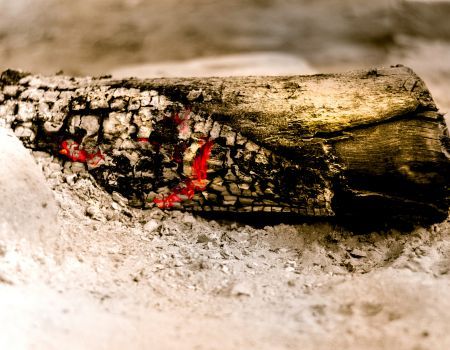
Make sure that the flame is totally extinguished - No burning embers to be left behind.
It is a wrap
Knowing how to start and build a fire is an invaluable skill. Not only can it be your lifeline if you end up in an emergency, but it can also make camping trips and other outdoor activities more enjoyable by allowing you to cook over a fire or just sit around one.
Once you gain the knowledge and practice of fire-starting, you’ll increase your confidence and open yourself up to many more wonderful experiences in the great outdoors.
Building a fire is something that becomes easier with each attempt. So don’t be intimidated about trying - instead, get outdoors and have fun with it! As long as safety precautions are taken, there’s no greater feeling than success after achieving your campfire blaze from scratch! Just remember to bring your gear with you (aka fire starter).
So what are you waiting for? Get out there and enjoy the fun of sitting beside a campfire or cooking your meals - take in the smell of burning wood and connect with nature as you hear the cracking sound of flames licking away at nearby logs.
Escape, Explore, Evolve: Living The Great Outdoors
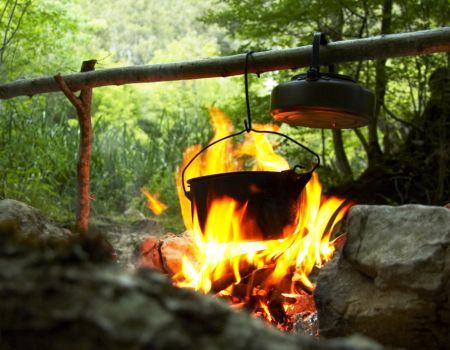
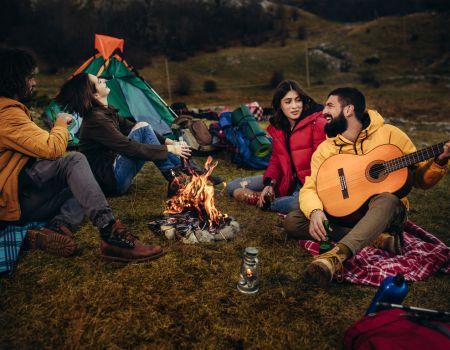
Enjoy The Great Outdoors - Sitting Beside A Camp Fire is Such a Great Feeling
Living The Great Outdoors with Trusted Outdoor Gear!
To find out which types of camping, from RV camping to Glamping, is the right one for your next getaway, visit Types of Camping!
For great outdoor gear, check our takes on the Water Filter Straw, Ooni Koda 12 Pizza Oven, Best Gallon Water Bottle, and Best Motorcycle GPS Tracker.
Interesting Nugget
Keep your wit around the fire pit. Learn more about Campfire Safety Tips by Recreation.gov

